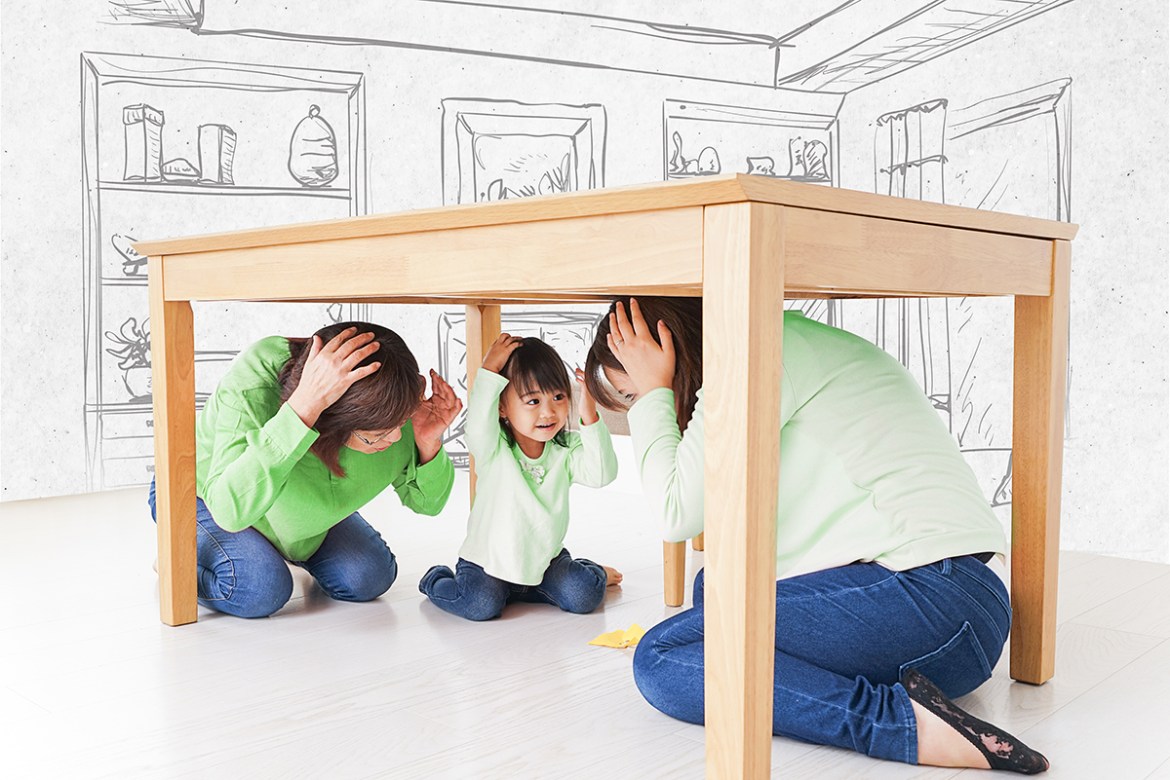An earthquake-prone country like the Philippines registers earthquakes daily, though most of them are not felt.
According to the Philippine Institute of Volcanology and Seismology (Phivolcs), an average of 20 earthquakes are recorded per day and about 100 to 150 earthquakes are felt every year.
The Philippines is on the western edge of the Pacific Ring of Fire and its location causes frequent seismic and volcanic activity.
Aside from its location, the Philippines is also known to have five major fault lines: Western Philippines fault, Eastern Philippine fault, South of Mindanao Fault, Central Philippine fault and the Marikina / Valley fault.
These active faults put different areas of the country at risk for earthquakes anytime, because unlike typhoons, earthquakes cannot be predicted.
Given that our country is always at risk, everyone should have the proper knowledge to prepare for natural disasters like earthquakes.
Being prepared could save lives so it helps to know what we should do before, during and after an earthquake.
What to Do Before an Earthquake
For natural disasters that cannot be predicted, the key to survival is disaster preparedness and it starts from planning.
Every household should have a family preparedness plan. Every member of the family should be taught what to do in case an earthquake happens.
Questions like what should we do, where should we go, how do we protect each other should be answered by each family member.
Every household should also establish a family communication plan.
For example, in case the family gets separated during an earthquake and communication lines get cut, where should they go first? How do we make sure to find each other? Everybody in the family should know the answer to such questions.
Every family member should also have a “go-bag” where one should be able to find things that would help him survive in case he gets trapped or help does not arrive quickly.
Some basic items inside a go-bag should include: water (1 gallon), food, battery-powered or hand-crank radio, flashlight, first aid kit, batteries, whistle to call for help, dust mask, local maps, cellphone with chargers and backup battery and a set of clean clothes.
Aside from the go-bag, you should also prepare your home. Even if your home is not earthquake-proof, you can make it safer in case an earthquake occurs.
Make sure to identify safe places in each room of the house. Find spots where you can stay to avoid injuries during earthquakes.
Store breakable items in low, closed cabinets; make sure the cabinets are fastened securely to the walls.
Picture frames, mirrors and other breakable items should not be hung near beds or couches.
Overhead lighting fixtures should be secured and braced properly.
Flammable products like pesticides should be stored properly in bottom cabinets.
If there are deep cracks in walls, ceilings or foundations, have them repaired.
Also, check for defective electrical wiring, water or gas connections.
What to Do During an Earthquake
When an earthquake occurs, the actions you should take depend on your current situation and location.
If you are indoors, the “duck, cover and hold” method is commonly used to protect one’s self.
Drop down onto your hands and knees and take cover in a safe place, hold on to something sturdy.
If you are in bed and find that there are no dangerous items that could possibly fall on you, better stay in bed and cover your head and neck with a pillow.
If you are in the kitchen and the stove is on, quickly turn it off, if possible.
Keep yourself away from anything that could fall or break like big picture frames, glass windows or light fixtures.
If you are outside when the earthquake happens, move into an open ground, away from buildings and other fixtures that could fall on you like street lights, poles and utility wires.
Stay low until the shaking stops.
In case you are in a moving vehicle in an open area, stop the vehicle and stay inside until the earthquake stops.
If you are not in an open area, move to a clear area, away from the buildings, trees, overpasses and other structures that could possibly collapse.
Once the shaking stops, proceed with caution, but avoid bridges or other structures that could have been damaged by the quake.
In case you are in a mountainous area, watch out for landslides and debris flows.
If you are in a coastal area, beware of tsunamis and keep updated on tsunami alerts.
What to Do After an Earthquake
When it comes to earthquakes, the shaking doesn’t stop after the main shock.
After an earthquake, we should be prepared for the aftershocks.
Although aftershocks may not be as intense as the main shock, they can cause additional damage to weakened structures.
Several aftershocks can occur hours, days or even weeks after an earthquake.
Stay vigilant and keep yourself updated with the latest information on the news.
Immediately after an earthquake, if you are indoors, look around for clear paths and leave the building to head for an open area.
Do not stay inside damaged homes. Phone calls should be limited to serious emergencies.
If you see injured or trapped people, help them or call for help. Do not move people who are seriously injured unless they are in a life-threatening emergency or in danger of further injury.
Even if your home seems safe after an earthquake, do a quick inspection and check for damaged walls, roof foundation, electrical system and water lines.
Check for spilled liquids and clean them up especially if they are flammable.
If you smell gas or fumes, leave the house immediately. Notify authorities if you suspect gas leaks.
Do not go back inside the house unless officials declare it to be safe.
Preparing for a disaster may seem overwhelming but it is something that needs to be done for the safety of your family.
Knowing what to do does not only prepare you, but it also lessens your anxiety when the actual disaster strikes.
When disaster strikes, it is best to have a reliable means of communication.
Be worry-free, stay connected and choose among Smart’s Signature Plans to fit your needs.
Prepaid subscribers can also stay connected by reloading through Smart’s GigaLife app.
#StaySafe #StaySmart



